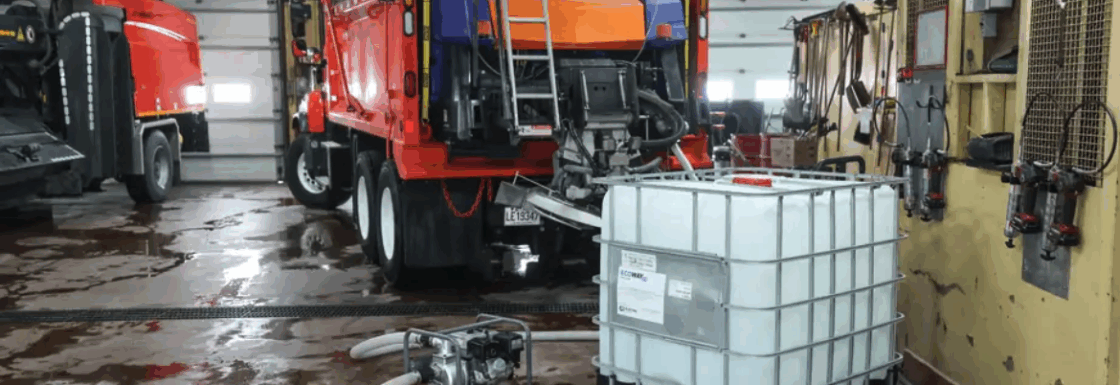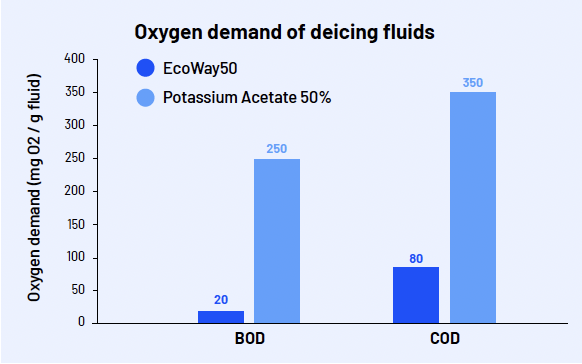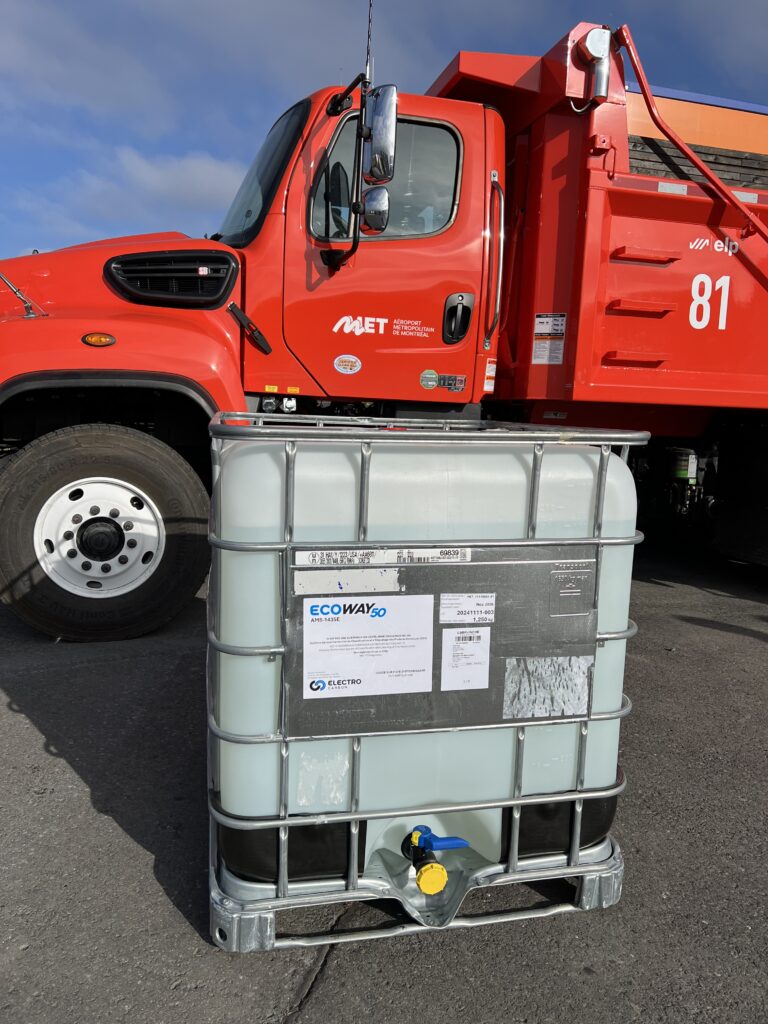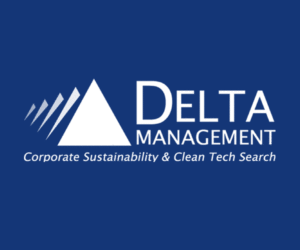Innovation in Turbulence: Electro Carbon’s climate-positive innovation

Reinventing essential chemicals for a sustainable future is never simple. From the runways of winter airports to the waterways they affect, the stakes are high. Martin Larocque of Electro Carbon Inc. traces the path of a climate-positive innovation—through setbacks, persistence, and breakthrough—to show how rethinking even the most routine products can unlock outsized environmental and economic impact.
Rethinking De-Icing for Environmental Impact
Reinventing chemistry for a sustainable future is not for the faint of heart. At Electro Carbon, we set out to replace an environmentally problematic chemical, starting with winter de-icing operations. What followed was a journey of trial, error, setbacks, and breakthroughs – an experience that highlights both the promise and the challenges of scaling climate-positive innovation.
Airports depend on liquid de-icing chemicals to keep runways safe in winter. Traditionally, these products are potassium acetate solutions. While effective, they are energy-intensive to produce and have serious environmental drawbacks once released into waterways. Conventional potassium acetate generates a very high Biological Oxygen Demand (BOD) and Chemical Oxygen Demand (COD) – metrics that measure how much oxygen is consumed by microorganisms as they biodegrade. High BOD and COD levels deprive aquatic life of oxygen and harm ecosystems.
Electro Carbon’s mission was clear: create a safer, cleaner, and climate-positive alternative. That meant not only producing a less harmful de-icer but also rethinking how it was made.
We developed a patented electrochemical process that consumes CO₂ – an undesired industrial waste – and uses clean electricity instead of fossil fuels. This method produces a potassium formate-based solution that replaces traditional potassium acetate.

The benefits are twofold: first, at the point of production, our “green juice” – the potassium formate we produce through electrochemistry – cuts greenhouse gas emissions by 64%, as validated by a life cycle assessment. As we scale our production capacity, our goal is to offer the market a molecule produced 100% through our electrochemical process, eliminating fossil-fuel reliance altogether.
Second, at the point of use, independent testing confirmed that our solution dramatically lowers its impact on ecosystems. Compared to potassium acetate, it reduces Biological Oxygen Demand by 92% and Chemical Oxygen Demand by 77%, significantly easing the load on downstream water treatment plants and contributing to lower operational costs.
Overcoming Technical, Regulatory, and Market Challenges
Like many startups, our path was not without setbacks. Early on, the electrochemical process worked in the lab but scaling it to an industrial level proved daunting. Reactors that performed flawlessly on a bench scale provided unstable performance in the long run. Finding an optimal electrochemical cell geometry, catalysts, and components took years of iteration – a race against the clock with limited resources, both financial and human.
Certification was another challenge. To be used by an airport, any new de-icer must meet rigorous international standards. The process of securing the AMS 1435E certification was lengthy and expensive, requiring extensive testing under conditions that mimic real-world airport winter conditions.
Then came market adoption. Procurement teams are understandably cautious: safety comes first, and changing a business-critical product like a de-icer is not a quick decision for a highly regulated environment like an airport. Convincing stakeholders to trial our product required persistence, third-party validation, and proof that performance matched or exceeded incumbents.

In that context, producing the first tonnes of our environmentally friendly AMS1435E certified liquid de-icing solution (ECOWAY50 – the cleanest runway de-icing liquid in the world) validated our ambition by providing an opportunity to complete pilot projects with end-users. These early adopters (from Tier 1 to regional airports) – pioneers who seized the opportunity to lead – gave us the chance to prove that our solution works.
Geography also plays a role. In North America, potassium acetate remains dominant, while most large European airports have already switched to potassium formate solutions due to its better environmental impact. This creates both a challenge and an opportunity: North America lags in adoption, but with the right policy and market signals, it could leapfrog directly into more climate-positive solutions.
Our experience also reflects the broader challenge of financing sustainable technologies. Canada has the talent and clean power resources to lead in climate-positive chemistry, but startups face steep barriers: costly certifications, risk-averse customers, and limited access to financing.
The past year has been especially hard for startups. Geopolitical uncertainty and shifting priorities have made it more difficult to attract investors who value sustainability. Too often, the value of a greener solution is no longer recognized as a decisive criterion. Having an amazing story or strong potential is no longer enough – it takes persistence and alignment to find the right partners.
We were fortunate to assemble a great group of investors with complementary expertise. Even though most are not involved in daily operations, they have been integral to our progress. Their support, patience, and insights have helped us navigate a very tough landscape.
Looking Beyond Aviation: Broader Applications and Lessons Learned
Our journey is ongoing. Every winter, airports will continue to need safe, reliable de-icing. The question is whether those needs can be met in ways that also advance climate goals and protect ecosystems. By rethinking how essential chemicals are made – and by facing setbacks with persistence and openness – startups like ours can help shift entire industries toward sustainability.
While airports are our beachhead market, they are not the end of the story. As we establish our base in aviation, we see equally important opportunities in other industries. One example is the heat transfer fluid market, where propylene glycol solutions dominate. Users rely on them largely because they are well-known and buyers are risk-averse to adopting alternatives. By applying our electrochemical process to this sector, we could deliver the same kind of environmental gains we’ve demonstrated in de-icing: cutting emissions at the point of production and drastically reducing downstream environmental impacts. The potential is therefore much larger than aviation alone.
Building a sustainability startup is never just about the product – it is mostly about persistence, resilience, partnerships, and proving proof of impact in the face of skepticism. For Electro Carbon, the journey from a lab bench to a certified de-icer has been marked by setbacks, breakthroughs, and hard-earned lessons we hope others can use. If there is one takeaway, it is this: innovation in sustainability is hard, but the environmental dividends make the struggle worthwhile.














